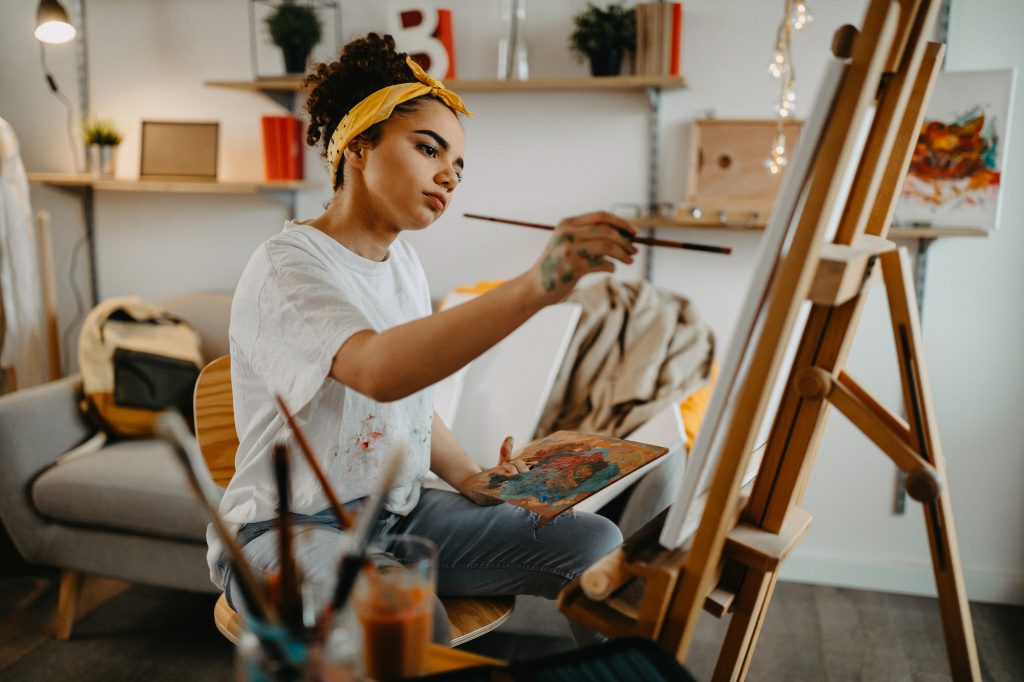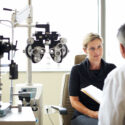The health benefits of creative expression

Activities or hobbies that require creativity can offer unexpected health benefits. Check out some of our suggestions for healthy expression!
Have you ever found that you feel better after participating in creative activity like dancing, painting, writing, singing, or acting? It turns out that you are not alone. Many of us look to creative activities, not only because we enjoy them, but for how it makes us feel. For some, the arts may be a way to relieve stress or other emotions. Whatever the pursuit, evidence suggests that creative outlets are good for us—they can even have a positive impact on our health and well-being.
Creative activities to improve your health
The health benefits of the creative arts are well documented. Engaging in artistic activities such as drawing, dancing, and playing music can enhance moods, reduce anxiety and stress, and alleviate burdens associated with chronic disease [1]. Studies have shown that creative engagement can also support mental health by reducing feelings of depression and isolation [2]. Let’s discuss the noted health benefits of a few different creative activities.
Expressive writing: Expressive writing allows you to “let go.” It encourages you to freely express your thoughts and emotions in writing. During an expressive writing exercise, you set aside all judgment. You can ignore spelling, punctuation, organization, and flow. The goal is to just let yourself write. Expressive writing has been shown to “give voice” to emotions, moods, and thoughts and has documented short- and long-term benefits, including improved overall well-being and quality of life [3].
Movement-based creative expression: Movement-based creative expression is about activities that connect the mind, body, and emotions. Dance, theater, tai chi, martial arts, and yoga are all types of movement-based creative expression. This type of creativity allows opportunities for play and exploration. It encourages you to focus on the connection between thoughts, emotions, and feelings. Documented benefits include improves cognitive and psychological measures, quality of life, body image, and perceived health [1].
Music: Music is one of the most accessible forms of art because enjoying it doesn’t require any specific skill or practice. You can just listen or choose to make your own music (or a combination of both). Some research has shown that listening to music can help to regulate emotions and stress [4]. The benefits of more structured engagement with music—the music therapy—have been well researched [1]. The practice has been shown to decrease anxiety, restore emotional balance, reduce pain, and reduce stress [1].
Visual arts: Visual arts include an umbrella of artistic activities, including making ceramics, sculpting, drawing, painting, crafting, taking photos, making movies, and more.Visual art can help people express thoughts and feelings that may be difficult to put into words and has been found to support the healing process for caregivers and those who are grieving as well as individuals with depression and anxiety, cancer, and chronic disease [1]. Documented benefits include the filling of occupational voids, positive identity affirmation, reduced stress, reduced compassion fatigue, reductions in distress and negative emotions, improved focus on positive life experiences, and increased self-worth [1].
Creative expression comes in numerous forms, and it’s a deeply personal endeavor. As you start to get more creative, try finding new activities that spark your interest, make you feel good, and bring you a sense of joy. Everyone is different, so no two people will like the same things. it may take some trial and error in finding activities you really love. Regardless of any documented benefits, how a creative activity makes you feel is what matters.
References:
[1] Staricoff R, Loppert S, Kirklin D, Richardson R. Integrating the arts into health care: Can we affect clinical outcomes. 2003. The Healing Environment: Without and Within. London: RCP, 63-79.
[2] Hannemann BT. Creativity with dementia patients. Can creativity and art stimulate dementia patients positively? Gerontology. 2006;52(1):59-65. doi: 10.1159/000089827
[3] Tonarelli A, Cosentino C, Tomasoni C, et al. Expressive writing. A tool to help health workers of palliative care. Acta Biomed. 2018;89(6-S):35-42. Published 2018 Jul 18. doi:10.23750/abm.v89i6-S.7452
[4] Juslin PN, Liljeström S, Västfjäll D, Barradas G, Silva A. An experience sampling study of emotional reactions to music: Listener, music, and situation. Emotion, 8(5), 668–683. Published 2008. https://doi.org/10.1037/a0013505
[5] Baikie KA, Wilhelm K. Emotional and physical health benefits of expressive writing. Advances in Psychiatric Treatment. 2005;11(5):338-346. doi:10.1192/apt.11.5.338
[6] Stuckey HL, Nobel J. The connection between art, healing, and public health: A review of current literature. Am J Public Health. 2010;100(2):254-263. doi:10.2105/AJPH.2008.156497



